It looks like you're using an Ad Blocker.
Please white-list or disable AboveTopSecret.com in your ad-blocking tool.
Thank you.
Some features of ATS will be disabled while you continue to use an ad-blocker.
share:


When one hears of the Kongo Great Lakes region,what comes to mind.a humid hell on earth.a by-word for all thats wrong with Africa.Tarzan's play ground,Heart Of Darkness, centuries old Slave factory and a cruel rubber baron's personal estate,so cruel he would make Hitler,Pol Pot,Idi-Amin murderous Hutus and Tutsis proud, a place where humanity stagnates,but what if I were to tell you it was not always thus.that civilizations sprang up in this region,that it sends out cultural and genetic bearers that influenced Kush,Kemet aka Egypt and lands of the Mediterranean north and South,that most of us have been influenced culturally today by folks that originated from that region in ways we can't even imagine.
More To Come.
The Ishango Bone
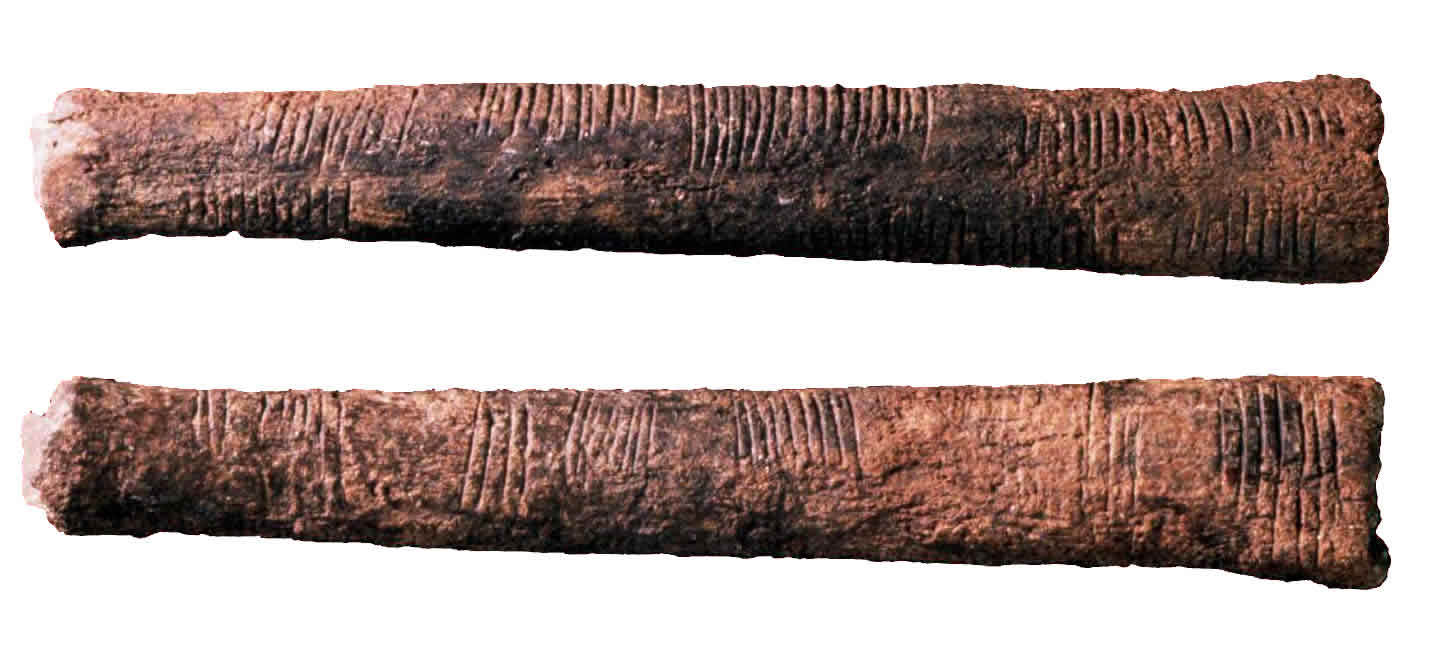
Most histories of mathematics devote only a few pages to Ancient Egypt and to northern Africa during the 'Middle Ages´. Generally they ignore the history of mathematics in Africa south of the Sahara and give the impression that this history either did not exist or, at least, is not knowable, traceable, or, stronger still, that there was no mathematics at all south of the Sahara. In history, to Europeans, even the Africanity of Egyptian mathematics is often denied or suffers eurocentric views of conceptions of both 'history' and of 'mathematics' form the basis of such views.
High in the mountains of Central Equatorial Africa, on the borders of Uganda and Zaire lies Lake Edward, a source of the Nile. It is a small lake (about 30 miles by 60 miles).
Though the area is sparsely populated today, approximately 25,000 (update from 9,000) years ago by the shores of the lake lived a small community that fished, gathered, and grew crops The settlement only existed a few hundred years before being buried in a volcanic eruption. The place where their remains were found (1960) has a name now given to these people - Ishango. Among their remains is the second oldest mathematical object (the oldest is here) in Africa.
Some say that the Ishango Bone is the oldest table of prime numbers. Marshack later concluded, on the basis of his microscopic examination, that it represented a six-month lunar calendar.
prime numbers or menstral calendar
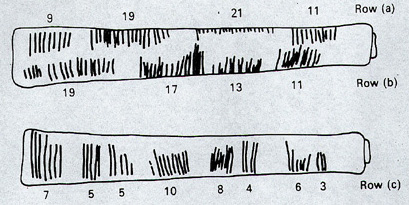
The most interesting, of a large number of tools discovered in 1960 at Ishango, is a bone tool handle called the Ishango Bone (now located on the 19th floor of the Royal Institute for Natural Sciences of Belgium in Brussels, and can only be seen on special demand). At one end of the Ishango Bone is a piece of quartz for writing, and the bone has a series of notches carved in groups (shown below). It was first thought these notches were some kind of tally marks as found to record counts all over the world. However, the Ishango bone appears to be much more than a simple tally. The markings on rows (a) and (b) each add to 60. Row (b) contains the prime numbers between 10 and 20. Row (a) is quite consistent with a numeration system based on 10, since the notches are grouped as 20 + 1, 20 - 1, 10 + 1, and 10 - 1. Finally, row (c) seems to illustrate for the method of duplication (multiplication by 2) used more recently in Egyptian multiplication. Recent studies with microscopes illustrate more markings and it is now understood the bone is also a lunar phase counter. Who but a woman keeping track of her cycles would need a lunar calendar? Were women our first mathematicians?
www.math.buffalo.edu...
The God Bes
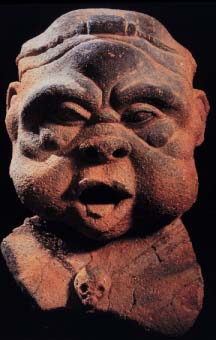
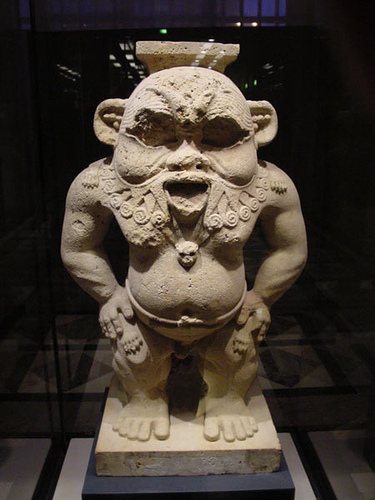
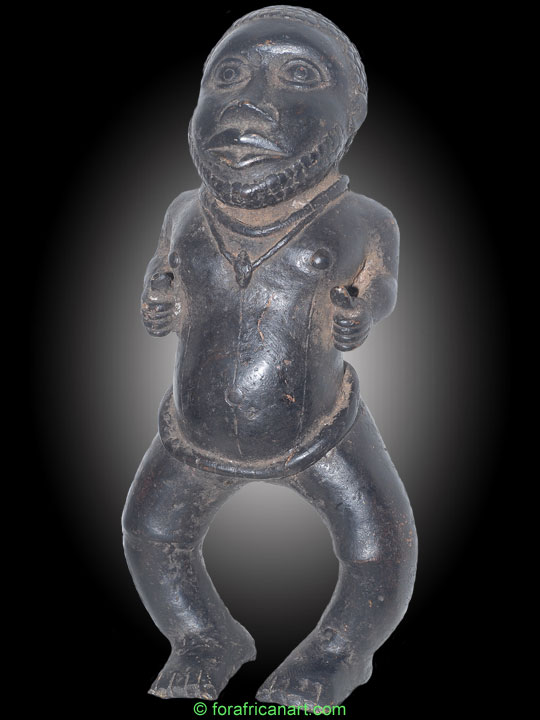
The first one is a sculpture of a Yoruba figure called a Child of Obatala. Obatala is a Yoruba god. And the second one is the Egyptian god Bes. the third one is from the Kongo And all three are wearing a skull necklace.
The God Bes is connected to the Ba-Twa commonly known as Pygmies they were brought to Kush and Kemet to do the dances of the Gods,this pre-supposed some ancestral connections with that area especially when we factor in the Mountains of the moon and the source of the Nile
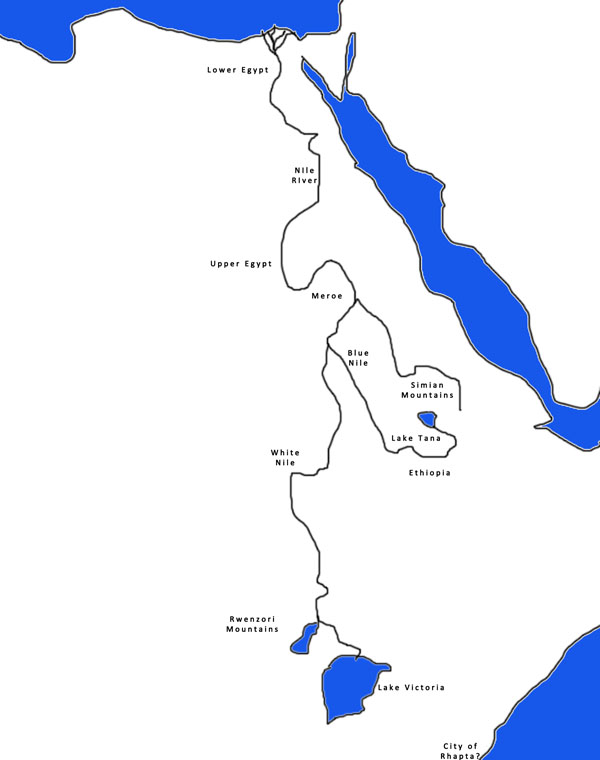
more to com.
edit on 15-2-2013 by Spider879 because: To add more info.
edit on 15-2-2013 by Spider879 because: (no reason
given)
edit on 15-2-2013 by Spider879 because: (no reason given)
Originally posted by kimish
Thought provoking.
I'm ready for chapter 2.
Coming soon right after work lol.

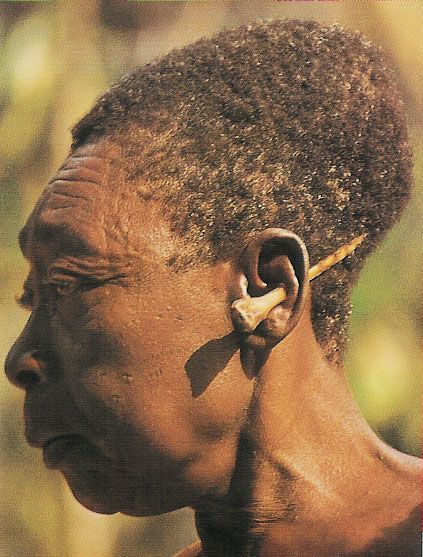
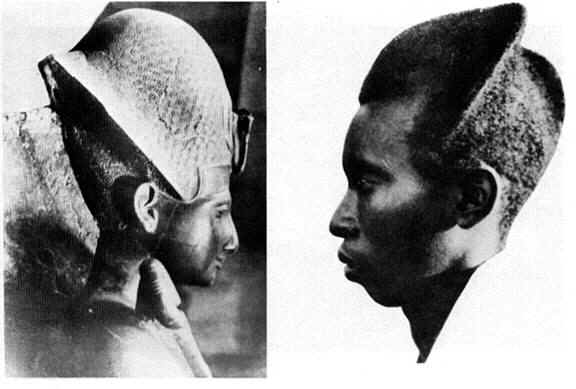
Some more interesting points of comparasion
Among the cultural traits shared with downriver Nile Valley civilizations are head bindings in the Kongo and among Wa-Tutsi ,while this practice is not unique to Africa it lay among other cultural traits,then there is the blue crown and Wa-Tutsi royal men hair-do. on another note the Ancient Egyptians made use of Bantu prefixes..such as Wa and Ba although belonging to two separate language families.
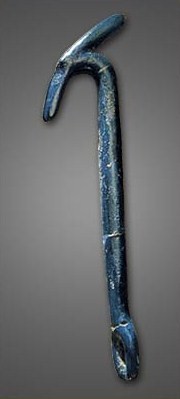
Egyptian

Somali
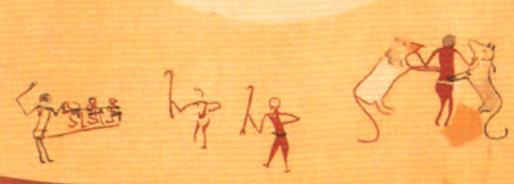
South African
we have an early and a rather simple rendition dating back to ca. 3500 BC, found in the Hierakonpolis tomb 100, sporting several individuals holding what appear to be Was scepter Read more: egyptsearchreloaded.proboards.com...

The Was Scepter was part of the royal and priestly Parahanilia of the Great lakes region all the way over to the Horn
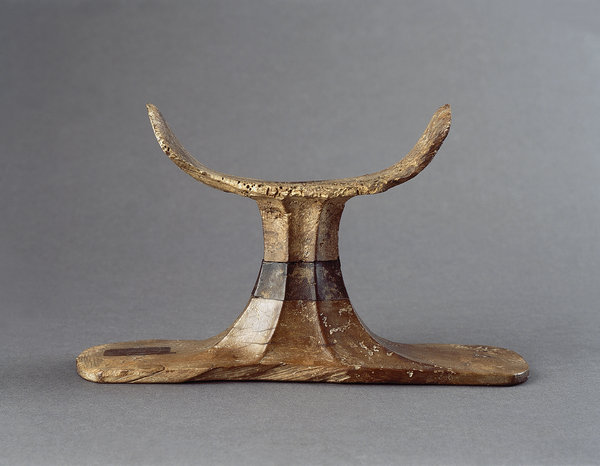
Egyptian
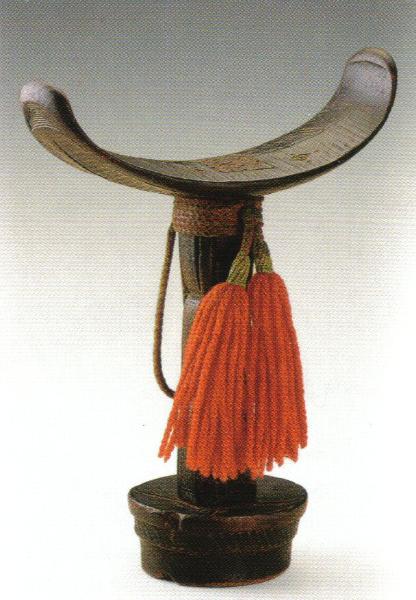
Somali
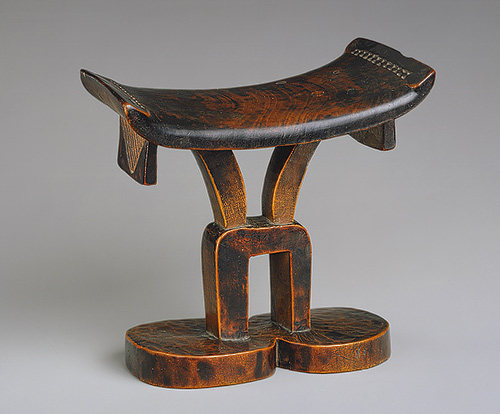
Egyptian Somali and South African Head-rest,these are wide spread through out Africa but one is hard pressed to find it's use in regions immediate out-side Africa.
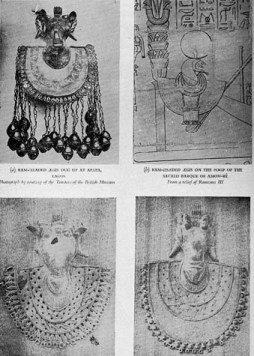
Some interesting pectorals, from the Nile Valley and sub-Saharan west Africa. In this case, we have pectorals sporting ram heads, demonstrating remarkable parallelism; the examples here, include one from ancient Egypt and Nigeria The ancient Egyptian example is obvious on the top right hand side, sporting a ram head with a sun disc.Keep in mind the Nigerian Bes.
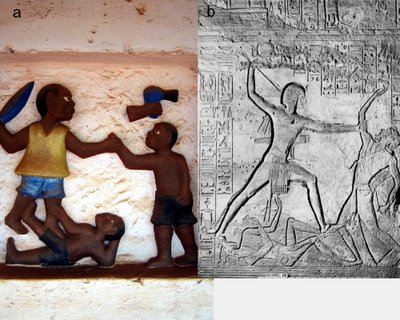

Top image shows the Fon art on the left hand side, which is reminiscent in its theme, of the ancient Egyptian wall relief of Rameses smiting an enemy on the right hand side. Bottom image shows another example of parallels between west Sahelian/Sub-Saharan art [likely Benin carving] — sporting the head of some carnivorous creature [likely a feline of some sort] on the left hand side, and two ancient Egyptian figurines — one sporting a falcon head, and the other, a feline; what stands out here, is the remarkably similar standing postures, particularly what they are doing with their arms and hands.
exploring-africa.blogspot.jp...
One point of clarification this does not mean everyone in Africa came from Egypt,but rather they shared a couple point of origins or nurseries the Sahara,the Great lakes and the Horn,but in point of genetic mapping some surprising results came from DNA TRIBES espicially from Southern Africa,however it should be pointed out that the South Africans only reached there from central Africa comparatively recent time.
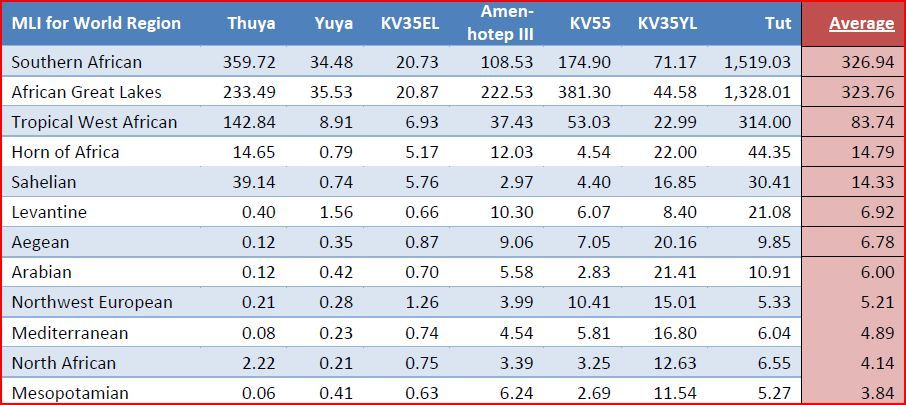
Results indicated the autosomal STR profiles of the Amarna period mummies were most frequent in modern populations in several parts of Africa. These results are based on the 8 STR markers for which these pharaonic mummies have been tested, which allow a preliminary geographical analysis for these individuals who lived in Egypt during the Amarna period of the 14th century BCE. Although results do not necessarily suggest exclusively African ancestry, geographical analysis suggests ancestral links with neighboring populations in Africa for the studied pharaonic mummies. If new data become available in the future, it might become possible to further clarify results and shed new light on the relationships of ancient individuals to modern populations.
dnatribes.com...
klik for the full report.
edit on 15-2-2013 by Spider879 because: (no reason given)

Can't get the vid just right ^ but please klik
Ron Eglash: The fractals at the heart of African designs
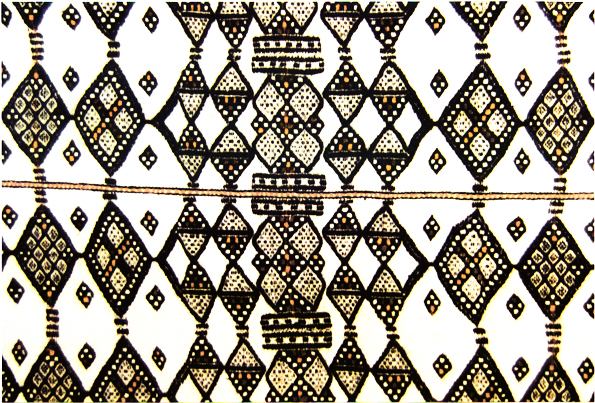
Fulani wedding blanket
One of the most suprising things I have learnt was the African origin of Fractals pls goto the vid and klik the link on the link ,think of how one would use your computer with out it.
The most interesting thing I found out about it was historical. In the 12th century, Hugo Santalia brought it from Islamic mystics into Spain. And there it entered into the alchemy community as geomancy, divination through the Earth. This is a geomantic chart drawn for King Richard II in 1390. Leibniz, the German mathematician, talked about geomancy in his dissertation called De Combinatoria. And he said, "Well, instead of using one stroke and two strokes, let's use a one and a zero, and we can count by powers of 2." Right? Ones and zeros, the binary code. George Boole took Leibniz's binary code and created Boolean algebra, and John von Neumann took Boolean algebra and created the digital computer. So all these little PDAs and laptops -- every digital circuit in the world -- started in Africa, and I know Brian Eno says there's not enough Africa in computers; you know, I don't think there's enough African history in Brian Eno.
csdt.rpi.edu...
African Fractals
A fractal is a pattern that repeats itself at different scales. It is ideal for modeling nature: a tree is a branch of a branch of a branch; mountains are peaks within peaks; clouds are puffs of puffs, and so on. But modern computer scientists aren't the only ones to use fractals: Africans have been using them for centuries to design textiles, sculptures, architecture, hairstyles and more. In this website you will learn how fractal geometry is used in computing and science, and apply that knowledge to simulating African designs.
edit on 15-2-2013 by Spider879 because: (no reason given)
edit on 15-2-2013 by Spider879 because:
Correcting
edit on 15-2-2013 by Spider879 because: Fixed the Vid.
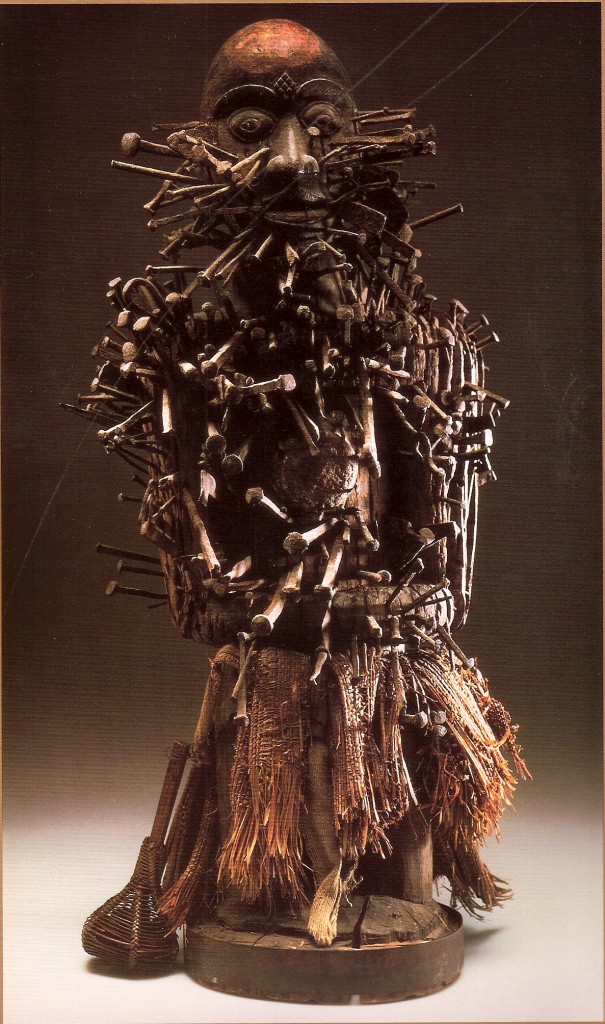
n this cosmology, nature is viewed as cyclical. Events of the past exist simultaneously within the present, the living and the dead sharing parallel realms despite neither being able to fully see or understand each other. Because Minkisi operate in a place between the living and the dead, they are said to have special knowledge. A Nkisi will know things beyond the owner or maker’s knowledge. Their activation is an act of communication between the worlds but is a translated dialogue because there are certain things and events in and of themselves that can only be known by the spirit itself. Likewise, the maker of a Nkisi and the diviner who will speak with Nkisi will each be aware of certain traits and powers the other does not understand and that it’s owner will not be aware of.
thehundredinthehands.com...
Figures such as the above may have slightly different purpose despite looking similar at first glance.

Voodoo Doll 4th cent Egypt
But the influence of the kongo/Great Lakes can still be felt today in places as far apart as Egypt,Somalia,Ethiopia,Iran.in a Ritual trans dance that maybe the last vestiges of Osirian worship,the Vid below is an example but bewere the up-loader is a hostile witness as Zar like Vodun in the west is demonized and can get you thrown in jail in some quarters
Zar, in the sense of possession, is usually, though not exclusively, inherited. It is also contagious and may strike at any time. Diriye Abdullahi, a native of Somalia, says that the zar is basically a dance of spirits, or a religious dance - kind of leftover from the old African deities, a variant of what we describe in the west as "voodoo". The old African deities were headed by two figures; Azuzar (the male, assoc. with Osiris) and Ausitu (the female, known in the west as Isis). Ausitu (or Aysitu in Somalia) is still celebrated and given offerings by pregnant women so that she will provide them with a safe birth. He describes it as a ritual dance which is mostly observed by women, especially older women. This corresponds to the practice of older African religions, in which older women were the priestesses. He maintains that younger women, especially unmarried women, are not generally thought to be "worthy of a visit by the spirit of Zar, who chooses domicile or residence in the person who is his choice."
Traditionally, women are carriers of the Zar tradition. A Zar is a spirit. Some Ethiopians and Yemenis have their own Zar, like a guide of guardian angel. The dance ritual, Zar, like other traditional healing ceremonies, as for instance practiced by the !Kung of Southern Africa, is done to regain a sense of balance and harmony in one's life and in tandem with the community.
The word Zar is thought by some to be a corruption of Jar which in the Cu#ic language of the Agaw people is the word for Waaq the sky god. The Rastafarians call god Jah.
And Yah is a very old Ancient Egyptian word for God.
See also:
The Zar: Women's Theatre in the Southern Sudan,"Women's Medicine: Zar Cult in Africa and Beyond, ed. by Ioan Lewis, Edinburgh: Edinburgh University Press, 1991
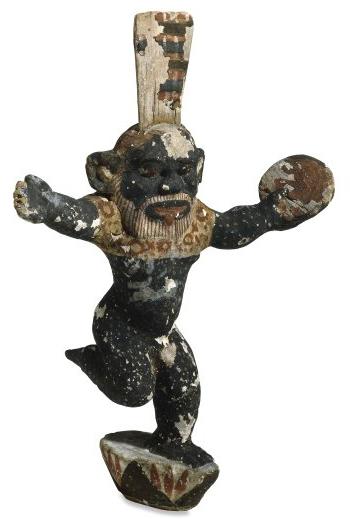
To add to the point of the above post.Bes dancing with Tambourine

This figure would later be transformed into Pan of the Greeks and Satyres


Temple of Isis Pompeii

A mock-up how it would have looked
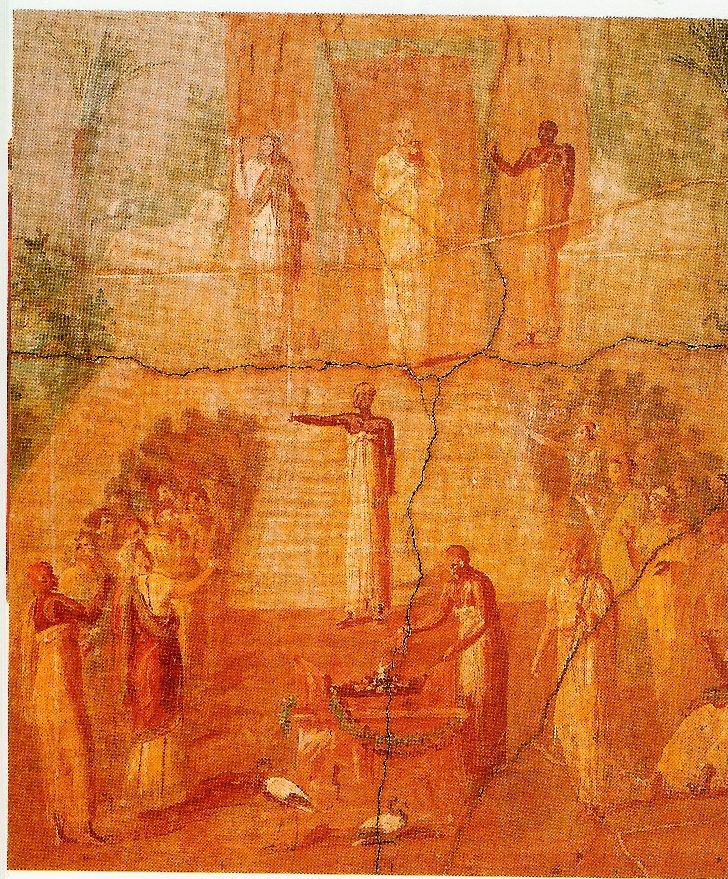
More to come on the Mediterranean connection and beyond stay tuned ask difficult questions, challenged my assumptions.
Keep in mind I am not big into putting people in boxes called races Negroid,Caucasiod and such is to me nonsense terms,but do humans vary?? yes
are we distinct species from each other.. no! The cultural aspect and connections is far more interesting to me.
Now how and when did central African religious ideas reached the Mediterranean and into Europe is hard to tell,it but lets start with a people called the Natufians anything thing further back and one might as well start with the first out of Africa movement.
I am sure most here have heard of Gobeki Tepe but most have not put much thought about the people associated with that complex,like where did they originate,as far as Bio-anthroplogist can tell they are related to a Nile Valley folk called the Mashubans who gave rise to the Natufians.
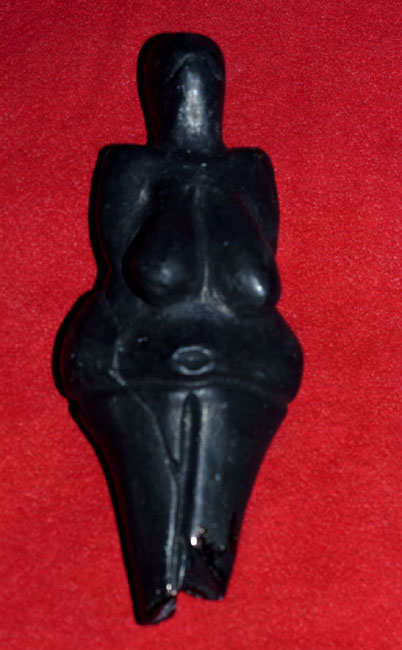
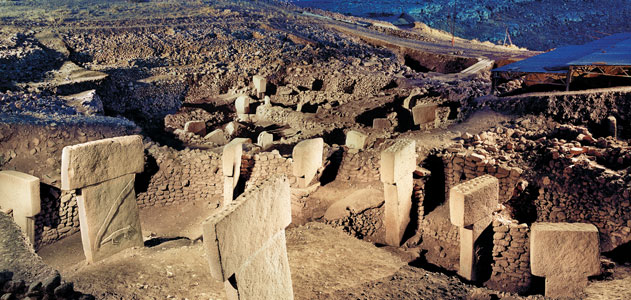
In 8000 B.C. the Natufians -- a hunting-gathering people -- lived in the region around Jericho and the Dead Sea. They were first to cultivate this new mutation -- this modern wheat. They became the first farmers.
"They were clearly a Negroid people, said Sir Arthur, with wide faces flat- noses and long large heads." 1932 NY Times (Discovery of the Natufians)
Larry Angel (1972): "one can identify Negroid traits of nose and prognathism appearing in Natufian latest hunters.(McCown, 1939) and in Anatolian and Macedonian first farmers, probably from Nubia via the predecesors of the Badarians and Tasians..."
C.L. Brace (2005): "If the late Pleistocene Natufian sample from Israel is the source from which that Neolithic spread was derived, there was clearly a sub-Saharan African element present of almost equal importance as the Late Prehistoric Eurasian element."
A Conversation with Christopher Ehret
Christopher Ehret, UCLA
Interviewed by WHC Co-editor Tom Laichas
WHC: You seem to be suggesting that the Semitic monotheism Jewish, Christian and Islamic monotheism descends from African models. Is that fair?
Ehret: Yeah, actually it is. Look at the first commandment: "Thou shalt have no other gods before me." It's not like the Muslim creed, which is "There is no God but God." It's doesn't say "there is no god but Yahweh, and Moses is his prophet." It is an admittance that there are other gods. It is an example of henotheism. And the Hebrew tribes are like the Omati clan groups. The tribes are clans writ larger. Like the Omati clans, they track their ancestry back ten or fifteen generations to a common ancestor. And these common ancestors were twelve brothers. (Actually, there are thirteen. They have to turn two of them, Ephraim and Manasseh, into half tribes, because thirteen wasn't a good number. I always loved that. There are really thirteen tribes, but you have to combine two of them).
worldhistoryconnected.press.illinois.edu...
Recomend cliking^ the link great interview.
The Canaanite cities have an alternative Semitic structure: polytheism. There's Astarte and Baal and the various gods that you'll find in South Arabia. So it looks like in the early Semitic world, you have two coexisting religions. You have polytheism among the ones who are really more urbanized. Then you have henotheistic groups.
Read more: egyptsearchreloaded.proboards.com...
Now how and when did central African religious ideas reached the Mediterranean and into Europe is hard to tell,it but lets start with a people called the Natufians anything thing further back and one might as well start with the first out of Africa movement.
I am sure most here have heard of Gobeki Tepe but most have not put much thought about the people associated with that complex,like where did they originate,as far as Bio-anthroplogist can tell they are related to a Nile Valley folk called the Mashubans who gave rise to the Natufians.


In 8000 B.C. the Natufians -- a hunting-gathering people -- lived in the region around Jericho and the Dead Sea. They were first to cultivate this new mutation -- this modern wheat. They became the first farmers.
"They were clearly a Negroid people, said Sir Arthur, with wide faces flat- noses and long large heads." 1932 NY Times (Discovery of the Natufians)
Larry Angel (1972): "one can identify Negroid traits of nose and prognathism appearing in Natufian latest hunters.(McCown, 1939) and in Anatolian and Macedonian first farmers, probably from Nubia via the predecesors of the Badarians and Tasians..."
C.L. Brace (2005): "If the late Pleistocene Natufian sample from Israel is the source from which that Neolithic spread was derived, there was clearly a sub-Saharan African element present of almost equal importance as the Late Prehistoric Eurasian element."
A Conversation with Christopher Ehret
Christopher Ehret, UCLA
Interviewed by WHC Co-editor Tom Laichas
WHC: You seem to be suggesting that the Semitic monotheism Jewish, Christian and Islamic monotheism descends from African models. Is that fair?
Ehret: Yeah, actually it is. Look at the first commandment: "Thou shalt have no other gods before me." It's not like the Muslim creed, which is "There is no God but God." It's doesn't say "there is no god but Yahweh, and Moses is his prophet." It is an admittance that there are other gods. It is an example of henotheism. And the Hebrew tribes are like the Omati clan groups. The tribes are clans writ larger. Like the Omati clans, they track their ancestry back ten or fifteen generations to a common ancestor. And these common ancestors were twelve brothers. (Actually, there are thirteen. They have to turn two of them, Ephraim and Manasseh, into half tribes, because thirteen wasn't a good number. I always loved that. There are really thirteen tribes, but you have to combine two of them).
worldhistoryconnected.press.illinois.edu...
Recomend cliking^ the link great interview.
The Canaanite cities have an alternative Semitic structure: polytheism. There's Astarte and Baal and the various gods that you'll find in South Arabia. So it looks like in the early Semitic world, you have two coexisting religions. You have polytheism among the ones who are really more urbanized. Then you have henotheistic groups.
Read more: egyptsearchreloaded.proboards.com...
edit on 17-2-2013 by Spider879 because: Error
edit on 17-2-2013 by Spider879 because: (no reason given)
reply to post by Spider879
You seem to be mixing artifacts from vastly different time periods and trying to connect them, and not connecting trade and war excursions into the area by various peoples. For instance, the skull necklace you show on Bes is not actually part of his official iconography -- depending on the time period, it may be an actual head, or other things (I have seen, but can't verify its reliability) a statue with an ankh necklace. I'm a tad suspicious of that one, but I can say that the Bes you have shown is not as typical as some of the other statues.
The Blue Nile and White Nile areas did include the great Kingdom of Kush, and Egypt spent a lot of time battling over who owned the lands around and below Meroe (first cataract.)
(BTW... I did have a look at the Wikipedia article on Bes, and the current incarnation of the article is not well sourced and seems to be making some unwarranted assumptions. TourEgypt seems to have more reliable links and information.) Some of your sources seem to be attempting to rewrite the history and archaeology of the area (particularly the observations about skeletal material. Anyone can look at the bones online and see for themselves (after going to Bone Clones and looking up what skull features distinguishes different genetic groups)
You seem to be mixing artifacts from vastly different time periods and trying to connect them, and not connecting trade and war excursions into the area by various peoples. For instance, the skull necklace you show on Bes is not actually part of his official iconography -- depending on the time period, it may be an actual head, or other things (I have seen, but can't verify its reliability) a statue with an ankh necklace. I'm a tad suspicious of that one, but I can say that the Bes you have shown is not as typical as some of the other statues.
The Blue Nile and White Nile areas did include the great Kingdom of Kush, and Egypt spent a lot of time battling over who owned the lands around and below Meroe (first cataract.)
(BTW... I did have a look at the Wikipedia article on Bes, and the current incarnation of the article is not well sourced and seems to be making some unwarranted assumptions. TourEgypt seems to have more reliable links and information.) Some of your sources seem to be attempting to rewrite the history and archaeology of the area (particularly the observations about skeletal material. Anyone can look at the bones online and see for themselves (after going to Bone Clones and looking up what skull features distinguishes different genetic groups)
edit on 17-2-2013 by Byrd because: (no reason given)
Originally posted by Byrd
reply to post by Spider879
You seem to be mixing artifacts from vastly different time periods and trying to connect them, and not connecting trade and war excursions into the area by various peoples. For instance, the skull necklace you show on Bes is not actually part of his official iconography -- depending on the time period, it may be an actual head, or other things (I have seen, but can't verify its reliability) a statue with an ankh necklace. I'm a tad suspicious of that one, but I can say that the Bes you have shown is not as typical as some of the other statues.
The Blue Nile and White Nile areas did include the great Kingdom of Kush, and Egypt spent a lot of time battling over who owned the lands around and below Meroe (first cataract.)
(BTW... I did have a look at the Wikipedia article on Bes, and the current incarnation of the article is not well sourced and seems to be making some unwarranted assumptions. TourEgypt seems to have more reliable links and information.) Some of your sources seem to be attempting to rewrite the history and archaeology of the area (particularly the observations about skeletal material. Anyone can look at the bones online and see for themselves (after going to Bone Clones and looking up what skull features distinguishes different genetic groups)edit on 17-2-2013 by Byrd because: (no reason given)
Thanks for the honest critique but actually I was not trying mixing artifacts out of context,but to show that the Great lakes area was in fact one of the cultural incubators going back to pre-history of what was to become Nile valley civilizations not limited to Egypt but for Kush and beyond also and yes the history and archaeology of the area do need to be revised,as far as the bio-anthropology stuff the genetic data is really quite recent actually about a year old,so I don't know how wide spread it has circulated to the layman researcher much less the general public I should make clear that the table below is one of genetic comparison
to Amarna royals and not skull and bones.
dnatribes.com...
klik for the full report.

edit on 17-2-2013 by Spider879 because: (no reason given)
Hmmm "dnatribes" its like consulting Egyptsearch forum for truthful
information about Egypt (its a website for promoting afrocentrism).
reply to post by LUXUS
How is Dna Tribe in-league with so-called Afrocentrist?? all they do is a certain amount of test and come up with an answer,and sometimes they come up with answers that makes so-called Afrocentrist mad as far as I can tell they have no ax to grind either way,Egyptsearch that was once a great site now over ran with trolls and posers of all stripes what a crime.
www.dnatribes.com...
As to your vid?? Negroids??? really are we really gonna go there??? the ancient Egyptians AkA Kemites are biologically and culturally Africans they did not came from Eurasia for the most part nor did they came from Zeta Reticuli.as far as their skeletal structure there were a tropically adopted people look-up Nazlet Khater man,see
Predynastic egyptian stature and physical proportions
Trotter &Gleser
link.springer.com...
How is Dna Tribe in-league with so-called Afrocentrist?? all they do is a certain amount of test and come up with an answer,and sometimes they come up with answers that makes so-called Afrocentrist mad as far as I can tell they have no ax to grind either way,Egyptsearch that was once a great site now over ran with trolls and posers of all stripes what a crime.
www.dnatribes.com...
As to your vid?? Negroids??? really are we really gonna go there??? the ancient Egyptians AkA Kemites are biologically and culturally Africans they did not came from Eurasia for the most part nor did they came from Zeta Reticuli.as far as their skeletal structure there were a tropically adopted people look-up Nazlet Khater man,see
Predynastic egyptian stature and physical proportions
Trotter &Gleser
link.springer.com...
reply to post by Spider879
In Scientific work people do not refer to "black" or "white" people, rather they use the term Negro (singular) Negroids (Plural), Caucasian (singular) Caucasoids (plural)....are you saying its racist to use the term Negroids now?
In Scientific work people do not refer to "black" or "white" people, rather they use the term Negro (singular) Negroids (Plural), Caucasian (singular) Caucasoids (plural)....are you saying its racist to use the term Negroids now?
edit on 17-2-2013 by LUXUS because: (no reason given)
Originally posted by LUXUS
reply to post by Spider879
In Scientific work people do not refer to "black" or "white" people, rather they use the term Negro (singular) Negroids (Plural), Caucasian (singular) Caucasoids (plural)....are you saying its racist to use the term Negroids now?
edit on 17-2-2013 by LUXUS because: (no reason given)
LUXUS yes race is bunk!
Dr. Shea responds:
An anthropologist who proposed using race as a serious way of describing human variability would be laughed out of the profession—not for reasons of political correctness, but because the idea displays a manifest ignorance of biology. More than 60 years ago, M. F. Ashley Montagu demolished the concept of “race” in his book, Man’s Most Dangerous Myth: The Fallacy of Race (1945). Nevertheless, like many a bad idea, the notion persists that there is some useful purpose in classifying humanity into five, six or a dozen races.
www.americanscientist.org...
Klik for full article^
reply to post by Spider879
I prefer to use commonsense then listen to that rubbish, these are the same people who say there is no genetic difference between humans...if that was so we would all look the same, be the same height, eye colour, skin colour etc...clearly we dont look the same and people have been aware of this for some time.
Try telling these people that there is no difference....funny how in modern times people can lose commonsense!
I prefer to use commonsense then listen to that rubbish, these are the same people who say there is no genetic difference between humans...if that was so we would all look the same, be the same height, eye colour, skin colour etc...clearly we dont look the same and people have been aware of this for some time.
Try telling these people that there is no difference....funny how in modern times people can lose commonsense!
reply to post by LUXUS
There is a difference between "race" as a social construct and science off course people varies but take that man in the vid clearly he is a blackman,but is he more closely related to his white visitor or an African,if you guess African you would be soo wrong, as he would be more closely related to olive-yellowish skinned Asian in a genetic sense dispite his looks it is called micro eveolution,you gain or lost certain traits based on your local environment.
Maybe this will help but I suggest watching the entire thing and it's not a bore.
There is a difference between "race" as a social construct and science off course people varies but take that man in the vid clearly he is a blackman,but is he more closely related to his white visitor or an African,if you guess African you would be soo wrong, as he would be more closely related to olive-yellowish skinned Asian in a genetic sense dispite his looks it is called micro eveolution,you gain or lost certain traits based on your local environment.
Maybe this will help but I suggest watching the entire thing and it's not a bore.
reply to post by Spider879
Heres a snippet from a commentary on that DNA tribes study,
And
dienekes.blogspot.com...
Heres a snippet from a commentary on that DNA tribes study,
The DNA Tribes results are interesting, but may hinge upon a few marker values that are more prevalent in Africa than in Eurasia. Also, it is not clear which population(s) make up the "North African" group. It would be interesting to extract full genome sequences from Egyptian mummies in order to properly place them in the global genetic landscape.
And
Hopefully, the debate on the genetic identity of the ancient Egyptians can proceed on the basis of new data, although I am not holding my breath that this will happen anytime soon, both because of the fluid state of politics in Egypt itself, the existence of various fringe theories outside of Egypt, and, the rather controversial state of mummy DNA analysis itself.
dienekes.blogspot.com...
reply to post by punkinworks10
Agreed but the genetic evidence is not a stand alone item if one was to take a multidisciplinary approach by factoring language and cultural traits shared by their neighbors,example take the Ba-Lemba Jews of southern Africa,for decades they have been telling an unbelieving world who they are and where they think they came from,despite having cultural traits not shared by their neighbours,only when a genetic test was done did they get vindication,now one has to ask oneself if it were any other group of people on this planet making such claims would a genetic test even be necessary.

Genetic Proof of Jewish Heritage Genetic tests on the Lemba people of southern Africa show convincing evidence the Bantu-speaking tribe may be of Jewish ancestry. A team of geneticists has discovered that Lemba men carry a DNA sequence that is distinctive to the Cohanim, a hereditary set of Jewish priests. The priests are different from rabbis, and perform certain ritual roles. The Lemba, who practice circumcision, keep one day a week holy and avoid eating pork or pig-like animals, have long asserted they are of Jewish heritage.
Yet these Jews carry a higher percentage of the so-called Cohen traits than any other group currently living in Isreal.
www.scienceinafrica.co.za...
Agreed but the genetic evidence is not a stand alone item if one was to take a multidisciplinary approach by factoring language and cultural traits shared by their neighbors,example take the Ba-Lemba Jews of southern Africa,for decades they have been telling an unbelieving world who they are and where they think they came from,despite having cultural traits not shared by their neighbours,only when a genetic test was done did they get vindication,now one has to ask oneself if it were any other group of people on this planet making such claims would a genetic test even be necessary.

Genetic Proof of Jewish Heritage Genetic tests on the Lemba people of southern Africa show convincing evidence the Bantu-speaking tribe may be of Jewish ancestry. A team of geneticists has discovered that Lemba men carry a DNA sequence that is distinctive to the Cohanim, a hereditary set of Jewish priests. The priests are different from rabbis, and perform certain ritual roles. The Lemba, who practice circumcision, keep one day a week holy and avoid eating pork or pig-like animals, have long asserted they are of Jewish heritage.
Yet these Jews carry a higher percentage of the so-called Cohen traits than any other group currently living in Isreal.
www.scienceinafrica.co.za...
Originally posted by Spider879
reply to post by punkinworks10
now one has to ask oneself if it were any other group of people on this planet making such claims would a genetic test even be necessary.
Yes it would be necessary because you see you have the Egyptians in Egypt who say they are the ancestors of the ancient egyptians and then you have other Africans such as west Africans and sub-Saharan, although to be honest its mainly African Americans who are making the biggest claim!
Personally I don't believe Sub-Saharan or west Africans have a thing to do with ancient Egypt...just wishful thinking!
Originally posted by LUXUS
Originally posted by Spider879
reply to post by punkinworks10
now one has to ask oneself if it were any other group of people on this planet making such claims would a genetic test even be necessary.
Yes it would be necessary because you see you have the Egyptians in Egypt who say they are the ancestors of the ancient egyptians and then you have other Africans such as west Africans and sub-Saharan, although to be honest its mainly African Americans who are making the biggest claim!
Personally I don't believe Sub-Saharan or west Africans have a thing to do with ancient Egypt...just wishful thinking!
How is that wishful thinking it's about facts,and the facts are that the Sahara dried up 6kyrs ago

www.touregypt.net...
The pharaohs of ancient Egypt owed their existence to prehistoric climate change in the eastern Sahara, according to an exhaustive study of archaeological data that bolsters this theory.
Starting at about 8500 B.C., researchers say, broad swaths of what are now Egypt, Chad, Libya, and Sudan experienced a "sudden onset of humid conditions." (See a map of Africa.)
For centuries the region supported savannahs full of wildlife, lush acacia forests, and areas so swampy they were uninhabitable.
During this time the prehistoric peoples of the eastern Sahara followed the rains to keep pace with the most hospitable ecosystems.
But around 5300 B.C. this climate-driven environmental abundance started to decline, and most humans began leaving the increasingly arid region.
"Around 5,500 to 6,000 years ago the Egyptian Sahara became so dry that nobody could survive there," said Stefan Kröpelin, a geoarchaeologist at the University of Cologne in Germany and study co-author.
Without rain, rivers, or the ephemeral desert streams known as waddis, vegetation became sparse, and people had to leave the desert or die, Kröpelin says.
Members of this skilled human population settled near the Nile River, giving rise to the first pharaonic cultures in Egypt
news.nationalgeographic.com...
Come on LUXUS I've seen some of your threads you actually can do research so I don't know why you fall short on this issue, I mean stuff like this is just basic info West-Africans and Nile Valley folks shared a connection from the Sahara they disperse throughout the continent when it dried-up and so that's why at their core they share similar institutions,pls re-read the post above, klik on the available links,if you just skimmed through the thread you are gonna miss critical points.the vid above you can FFWD to time 10:04 but watching the entire thing is rewarding, and if AAs are making the biggest claim it's for a reason as they are the ones who are faced
with rubbish about what their ancestors in or outside Africa can and cannot do or did and did not do.
Then there is the double talk in one era Racist used the myth of Ham as an excuse to en-slave black folks,then as soon as black folks who learn to read find out who those supposedly Hamites were they move the goal post and start calling Hamites dark whites,then they went on to being Aryan,but that wasen't enough for they went after the so-called Nubians when it suits them and just about any Africans that build anything larger than a termite hill or performed daringly on a battle field have angular features, slightly less wooly hair..yes they tried to claim even the Zulus and Maasai,another trick is to confine "true" Blacks to the forest zones but even then they were not satisfied as they lay claims to much of them also and so we came to the absurd conclusion that Blacks are basically Whites.
edit on 18-2-2013 by Spider879 because: (no reason given)
new topics
-
Bobiverse
Fantasy & Science Fiction: 1 hours ago -
Florida man's trip overseas ends in shock over $143,000 T-Mobile phone bill
Social Issues and Civil Unrest: 1 hours ago -
Former Labour minister Frank Field dies aged 81
People: 3 hours ago -
SETI chief says US has no evidence for alien technology. 'And we never have'
Aliens and UFOs: 5 hours ago -
This is our Story
General Entertainment: 7 hours ago -
President BIDEN Vows to Make Americans Pay More Federal Taxes in 2025 - Political Suicide.
2024 Elections: 10 hours ago -
Ode to Artemis
General Chit Chat: 10 hours ago
top topics
-
President BIDEN Vows to Make Americans Pay More Federal Taxes in 2025 - Political Suicide.
2024 Elections: 10 hours ago, 13 flags -
Should Biden Replace Harris With AOC On the 2024 Democrat Ticket?
2024 Elections: 16 hours ago, 6 flags -
One Flame Throwing Robot Dog for Christmas Please!
Weaponry: 14 hours ago, 6 flags -
Don't take advantage of people just because it seems easy it will backfire
Rant: 14 hours ago, 4 flags -
Ditching physical money
History: 14 hours ago, 4 flags -
SETI chief says US has no evidence for alien technology. 'And we never have'
Aliens and UFOs: 5 hours ago, 4 flags -
Ode to Artemis
General Chit Chat: 10 hours ago, 3 flags -
Former Labour minister Frank Field dies aged 81
People: 3 hours ago, 3 flags -
VirginOfGrand says hello
Introductions: 15 hours ago, 2 flags -
This is our Story
General Entertainment: 7 hours ago, 2 flags
active topics
-
Mood Music Part VI
Music • 3097 • : TheWoker -
President BIDEN Vows to Make Americans Pay More Federal Taxes in 2025 - Political Suicide.
2024 Elections • 42 • : network dude -
Post A Funny (T&C Friendly) Pic Part IV: The LOL awakens!
General Chit Chat • 7132 • : watchitburn -
So this is what Hamas considers 'freedom fighting' ...
War On Terrorism • 254 • : TheWoker -
"We're All Hamas" Heard at Columbia University Protests
Social Issues and Civil Unrest • 271 • : TzarChasm -
University student disciplined after saying veganism is wrong and gender fluidity is stupid
Education and Media • 45 • : TzarChasm -
Florida man's trip overseas ends in shock over $143,000 T-Mobile phone bill
Social Issues and Civil Unrest • 1 • : budzprime69 -
Don't take advantage of people just because it seems easy it will backfire
Rant • 7 • : confuzedcitizen -
Russia Ukraine Update Thread - part 3
World War Three • 5725 • : BernnieJGato -
NASA Researchers Discover a Parallel Universe That Runs Backwards through Time - Alongside Us
Space Exploration • 70 • : seekshelter
